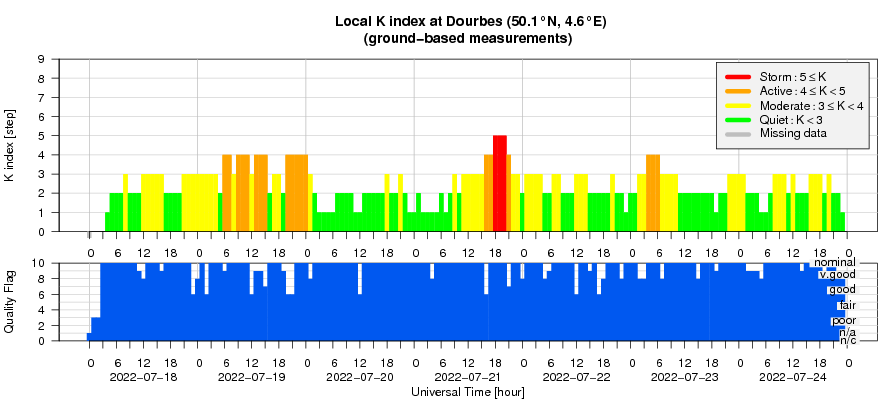- Table of Content
- 1.Word Search
- 2.Review of sola...
- 3.PROBA2 Observa...
- 4.The Internatio...
- 5.Review of geom...
- 6.Geomagnetic Ob...
- 7.The SIDC space...
- 8.Action!
2. Review of solar activity
3. PROBA2 Observations (18 Jul 2022 - 24 Jul 2022)
4. The International Sunspot Number by SILSO
5. Review of geomagnetic activity
6. Geomagnetic Observations at Dourbes (18 Jul 2022 - 24 Jul 2022)
7. The SIDC space weather briefing
8. Action!
Word Search
This puzzle is a word search puzzle that has a hidden message in it. The space weather topic is "Ionosphere and GNSS".
First find all the words in the list. Words can go in any direction and share letters as well as cross over each other.
Once you have found all the words, copy the unused letters starting in the top left corner into the blanks underneath to reveal the hidden message (7 letters).
_ _ _ _ _ _ _

A good source for more information on the words and acronyms used in this puzzle, is the ROB/GNSS website at http://gnss.be/ The image underneath shows the GNSS antenna on top of the telescope dome at the Royal Observatory of Belgium (ROB).
This puzzle was created with the Discovery Education online tool at https://puzzlemaker.discoveryeducation.com/
Enjoy!
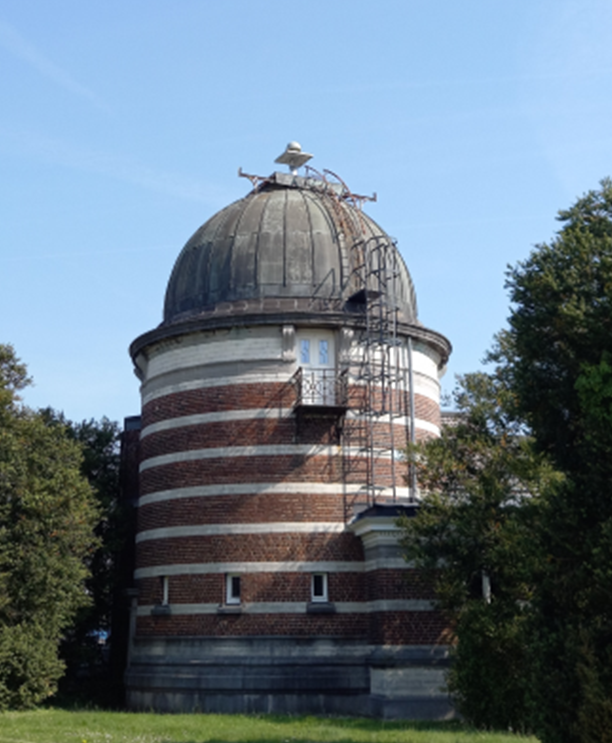
Review of solar activity
Flaring activity
Solar flaring activity was at low levels over the past week, with the C6.5 flare on 17 July and peak time 12:27 UTC from active region NOAA 3058 being the flare with the largest X-ray output. There were 18 active regions present on the solar disc during the week, most of them of small complexity and fairly stable. Active region NOAA 3060 produced a C5.6 flare on 21 July peaking at 01:11 UTC (see the H-alpha GONG image underneath) that was associated with a faint full halo coronal mass ejection (CME). By the end of the week, the filament eruption around NOAA 3059 on 23 July 19:03 UTC may have contributed to what was reported as a full halo CME, with onset time on 23 July at 18:48 UTC.
Filament eruptions and CMEs
There were multiple filaments observed on disc over the week, but none erupted while on the visible part. Numerous CMEs were observed, with most noteworthy the faint Earth directed full halo CME associated with the C5.6 flare 21 July 01:11 UTC (with type II radio emission and dimming - see the H-alpha GONG image underneath), and the full halo CME with onset time 23 July 18:48 UTC (no type II burst or apparent dimming associated).
Energetic particles
The greater than 10 MeV proton flux was at nominal levels. The greater than 2 MeV electron flux was above the 1000 pfu threshold at the beginning of the week, then decreasing to below threshold as the week progressed. The 24h electron fluence started at moderate levels and had evolved to normal levels by the end of the week.

PROBA2 Observations (18 Jul 2022 - 24 Jul 2022)
Solar Activity
Solar flare activity was low during the week.
In order to view the activity of this week in more detail, we suggest to go to the following website from which all the daily (normal and difference) movies can be accessed: https://proba2.oma.be/ssa
This page also lists the recorded flaring events.
A weekly overview movie (SWAP week 643) can be found here: https://proba2.sidc.be/swap/data/mpg/movies/weekly_movies/weekly_movie_2022_07_18.mp4.
Details about some of this week's events can be found further below.
If any of the linked movies are unavailable they can be found in the P2SC movie repository here: https://proba2.oma.be/swap/data/mpg/movies/.
Wednesday-Thursday July 20-21

Three interesting events occurred between July 20-21 that resulted in the C5.6 flare observed by LYRA, seen peaking in the plot above on the 21st of July at 01:11 UT.
Wednesday July 20
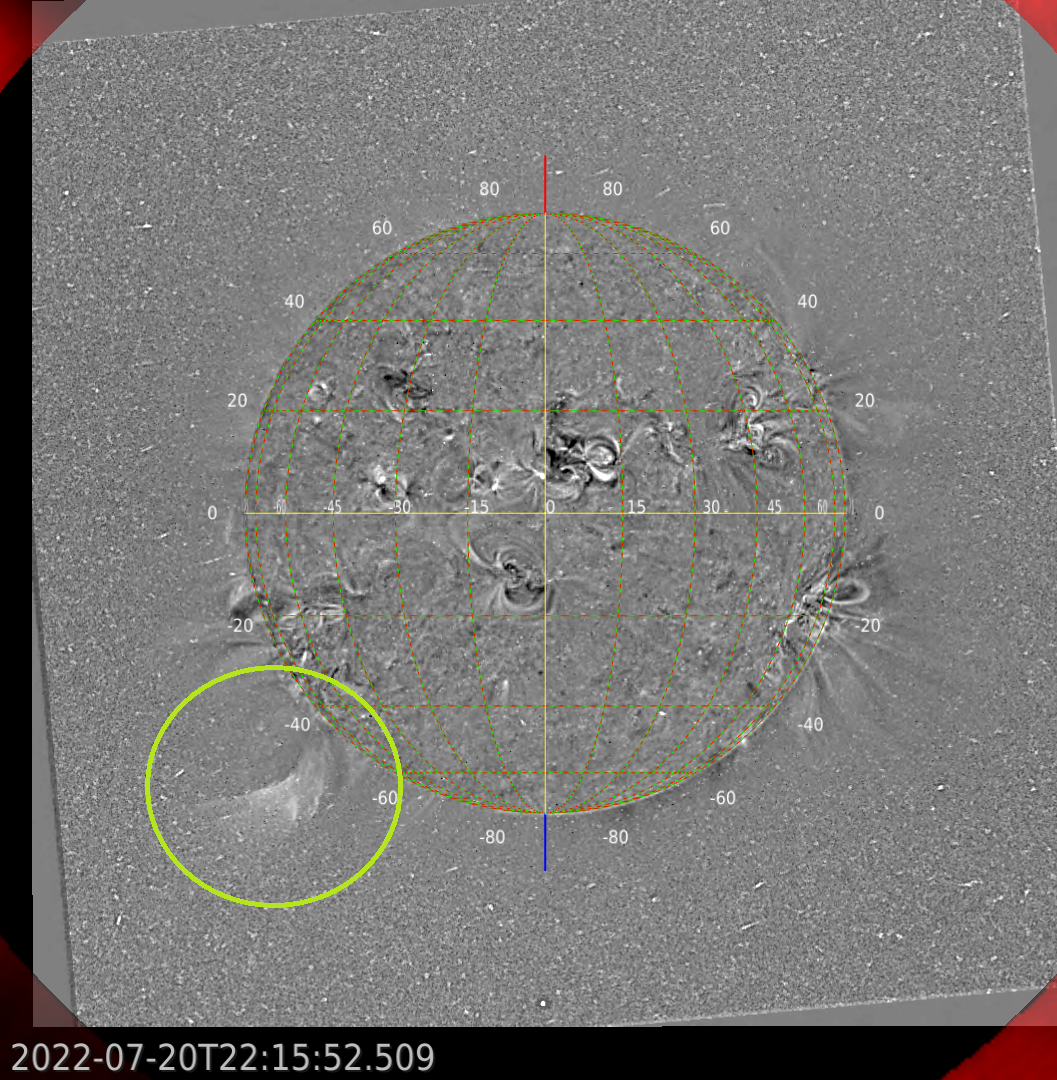
The first event started on 2022-Jul-20 and consisted in a highly non-radial prominence eruption, indicated by the green circle in the SWAP image above, in the South-East quadrant.
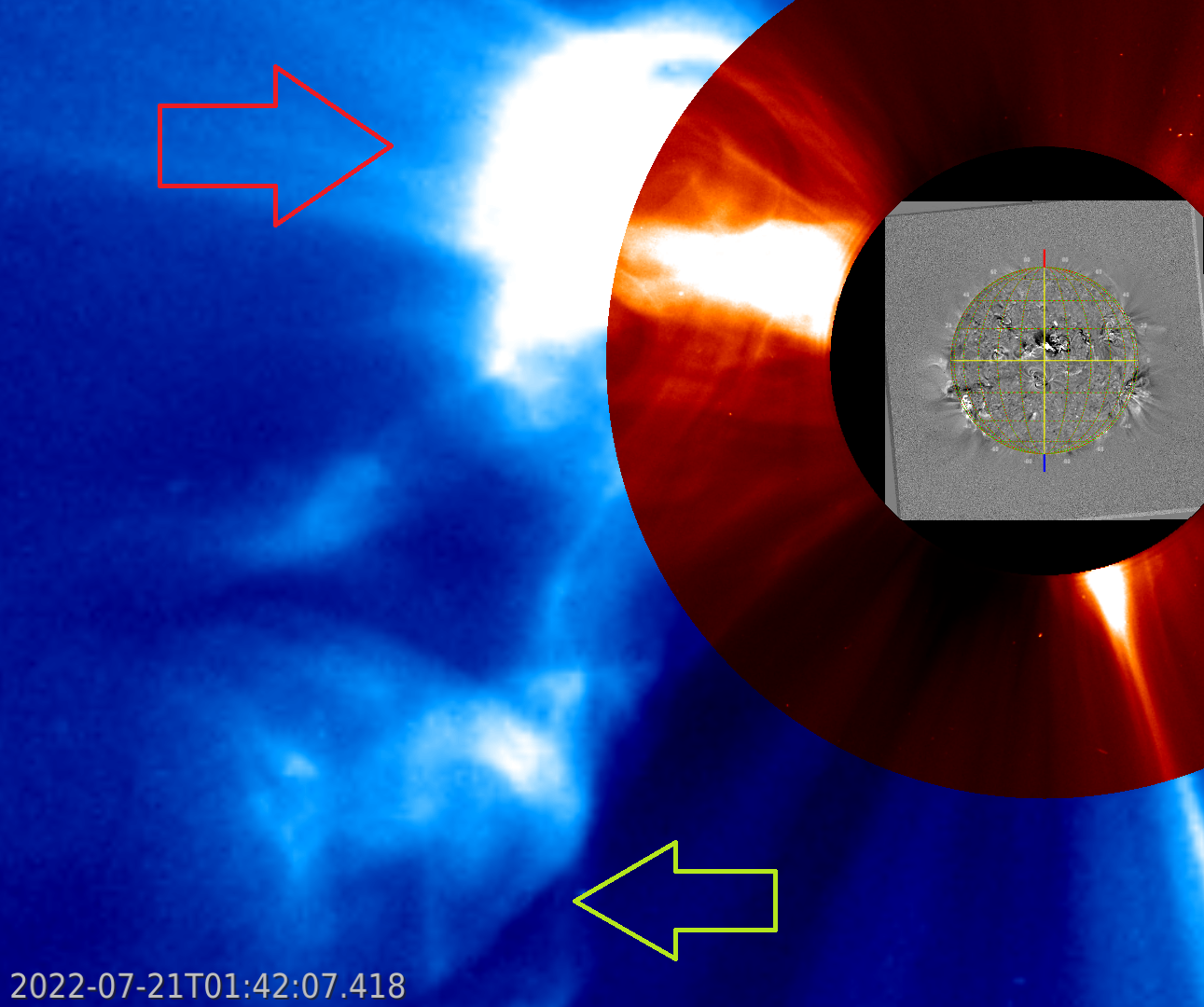
The prominence eruption was associated with the coronal mass ejection seen in the LASCO-C3 image above and indicated by the green arrow. The prominence material destabilized the arcade around which it erupted, causing it to rise and create the CME indicated by the red arrow. This second eruption is associated with the first part and peak of the C5.6 flare.
Find a SWAP movie of the two events here: https://proba2.sidc.be/swap/movies/20220720_swap_movie.mp4.
Thursday July 21
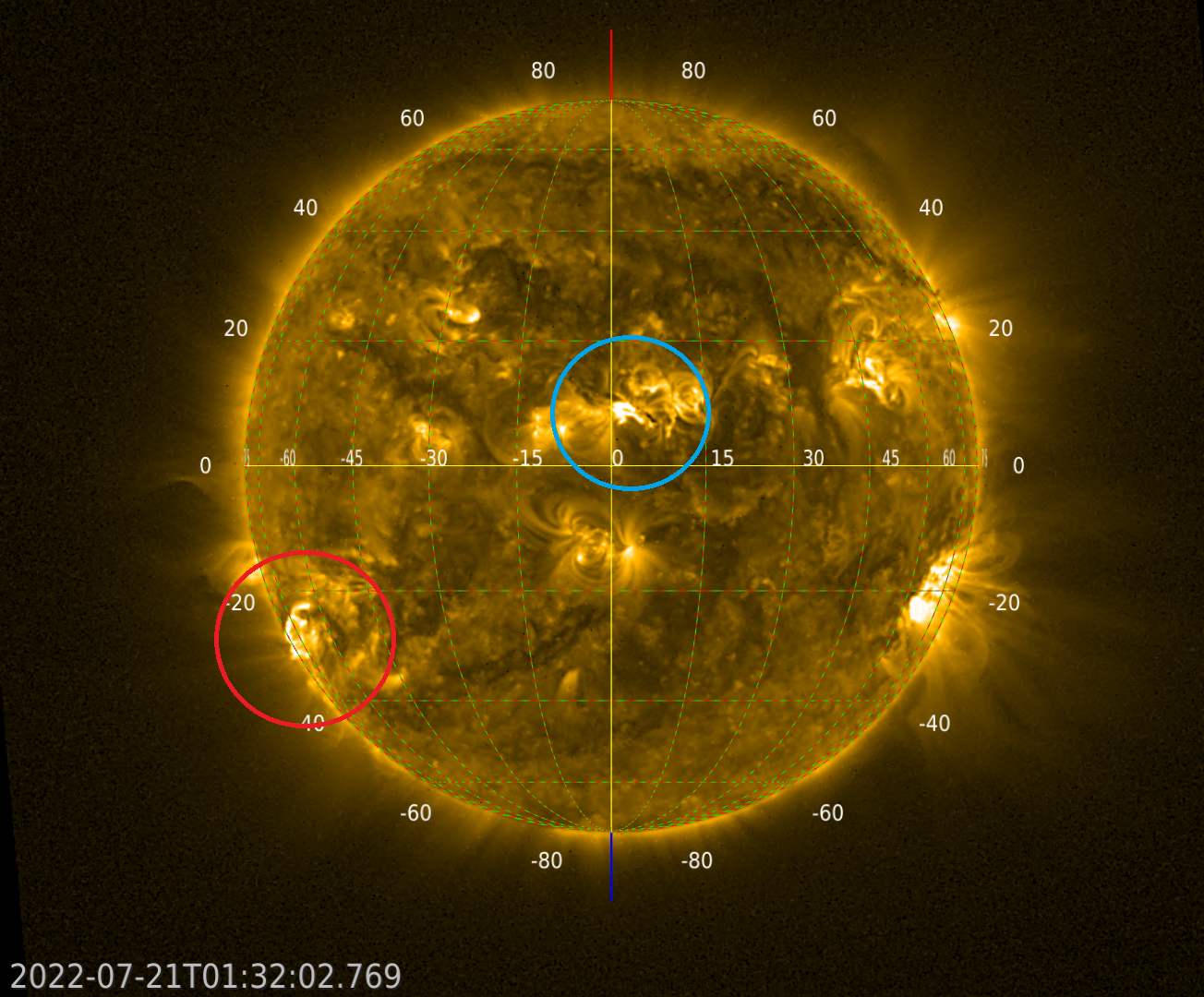
Approximately at the same time as the previous two eruptions, another CME erupted from NOAA 13060 located close to the central meridian. As the previously flaring region (red circle) was decaying, the new flare (blue circle) increased again the measured X-ray flux and created the second and highest peak of the C5.6 flare (at 01:11 UT), based on the already existing elevated level. The two flaring regions can be seen in the SWAP image above, taken on 2022-Jul-21 at 01:32 UT.
Find a SWAP movie of this last event here: https://proba2.sidc.be/swap/movies/20220721_swap_movie.mp4.
The International Sunspot Number by SILSO
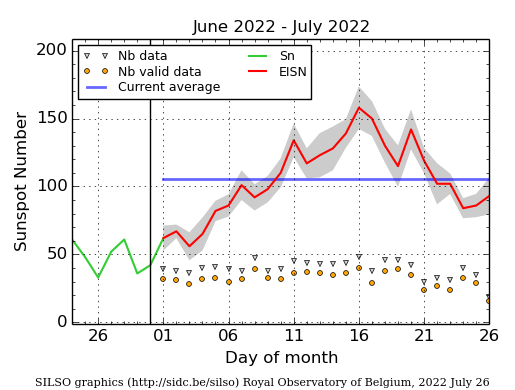
The daily Estimated International Sunspot Number (EISN, red curve with shaded error) derived by a simplified method from real-time data from the worldwide SILSO network. It extends the official Sunspot Number from the full processing of the preceding month (green line), a few days more than one solar rotation. The horizontal blue line shows the current monthly average. The yellow dots give the number of stations that provided valid data. Valid data are used to calculate the EISN. The triangle gives the number of stations providing data. When a triangle and a yellow dot coincide, it means that all the data are used to calculate the EISN of that day.
Review of geomagnetic activity
At the start of the week the solar wind speed returned to a slow solar wind regime until the arrival of the interplanetary CME (ICME) of 15 July. Late 21 July, the signature of the Co-rotating Interaction Region (CIR) from the negative polarity coronal holes that first crossed the central meridian on 18 July, became apparent in the solar wind parameters. On 23 July at 02:31UT, the shock from the full halo ICME that left the Sun on 21 July arrived at Earth, leading to values in the solar wind speed of over 700 km/s.
Geomagnetic conditions were at minor storm levels during both the ICME and CIR arrival, with NOAA Kp and Local K Bel reaching 5.

The SIDC space weather briefing
The SIDC Space Weather Briefing presented by the forecaster on duty from July 18 to 24. It reflects in images and graphs what is written in the Solar and Geomagnetic Activity reports: https://www.stce.be/briefings/20220725_SWbriefing.pdf
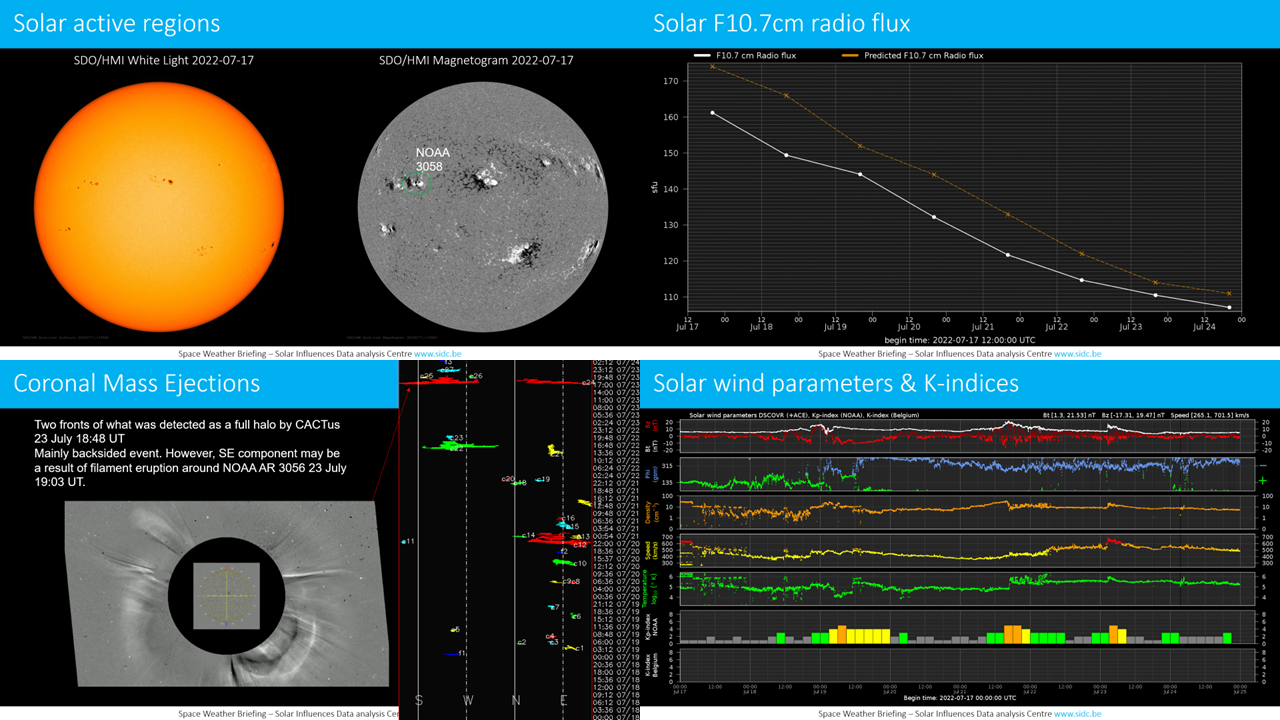
If you need to access the movies, please contact us: stce_coordination at stce.be
Action!
Check out our activity calendar: activities and encounters with the Sun-Space-Earth system and Space Weather as the main theme. We provide occasions to get submerged in our world through educational, informative and instructive activities.
If you want your event in our calendar, please contact us: stce_coordination at stce.be
* August 25, Public Lecture on Space Weather and Aviation, Astropolis, Oostende, Belgium
* September 24-25, Space Pole Open Days, Brussels, Belgium
* October 24-28, 18th European Space Weather Week, Zagreb, Croatia
* November 21-23, Space Weather Introductory Course - onsite, by the STCE, Brussels, Belgium
* December 5, 6, 8, 9, Space Weather Introductory Course - online, by the STCE, zoom
Check: https://www.stce.be/calendar

